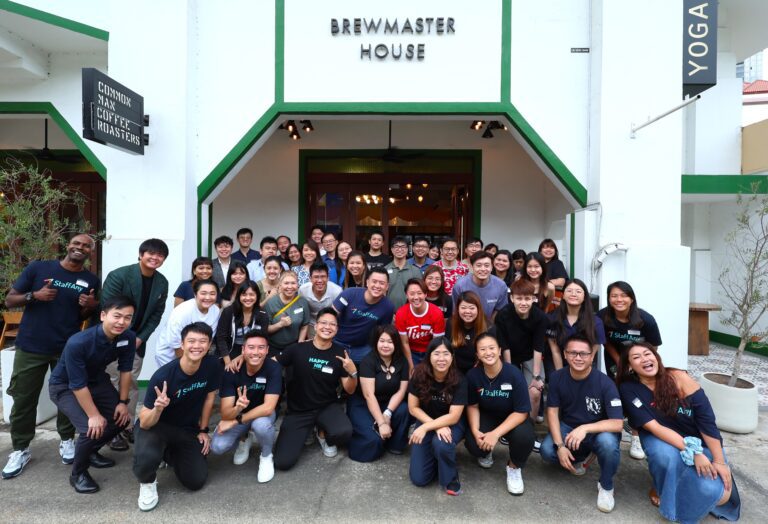In the dynamic realm of F&B businesses, the management of overtime transcends mere fiscal concerns. While occasional extra hours may be necessary to meet tight deadlines or unexpected demands, prolonged and persistent overtime can take a toll on the well-being of your workforce and, ultimately, the health of your business.
In this article, we will delve into the importance of reducing overtime, dissect the root causes of this pervasive issue, and provide you with a comprehensive set of ten practical tips on how to reduce overtime at work effectively. Let’s get started!
The Importance of Reducing Overtime
In the intricate landscape of F&B businesses, the imperative to manage overtime transcends mere financial prudence. It stands as a linchpin for both employee well-being and operational efficiency.
F&B businesses, characterised by their demanding and unpredictable nature, face unique challenges that make overtime reduction not just a cost-containment measure but a strategic move to cultivate a sustainable workplace culture.
Reducing overtime isn’t solely about the financial bottom line; it’s a safeguard for the physical and mental welfare of the workforce. The prolonged exposure to high-stress environments in the F&B industry can lead to burnout, diminished job satisfaction, and a palpable erosion of employee morale. Moreover, the consequences of excessive overtime extend to operational realms, compromising service quality, task accuracy, and overall efficiency.
Read more: 8 Types of Allowance for F&B Employees in Singapore
What Causes High Overtime in the F&B Sector?
The intricate dynamics of the F&B sector harbour several factors that contribute to the pervasive issue of overtime. Understanding these root causes is instrumental in formulating effective strategies for reduction.
1. Understaffing
The persistent issue of understaffing places a significant burden on existing employees. When the workforce is insufficient to meet operational demands, individuals often find themselves compelled to extend their working hours. This not only strains employee well-being but also becomes a cyclical problem as burnout and fatigue contribute to decreased overall efficiency.
2. Unpredictable Workload
The nature of the F&B industry is inherently unpredictable, with fluctuating customer demands and unforeseen rushes. These fluctuations often require staff to adapt quickly to surges in activity, leading to extended working hours. While adaptability is a hallmark of the industry, the constant need for overtime without adequate planning can result in fatigue and diminished job satisfaction.
3. Inefficient Scheduling
Inefficient scheduling practices, such as last-minute changes and inadequate shift planning, can disrupt the delicate balance between work and personal life. Employees may find themselves working longer hours due to poorly devised schedules, leading to dissatisfaction and, in the long run, contributing to high turnover rates.
4. Lack of Automation
Manual processes for time tracking and scheduling are not only time-consuming but are also prone to errors. Introducing automated systems can streamline these administrative tasks, ensuring accurate recording of working hours and reducing the likelihood of overtime due to administrative inefficiencies.
5. Inadequate Training
A workforce that lacks the necessary skills and training may struggle to complete tasks efficiently. This inefficiency can lead to extended working hours as employees take longer to fulfil their responsibilities. Investing in comprehensive training programs ensures that staff members are well-equipped to handle their duties within standard working hours, thereby reducing the need for overtime.
Read more: Basic Salary Vs Gross Salary: Differences and Similarities
How to Reduce Overtime at Work in the F&B Sector?
Effectively managing overtime in the F&B sector requires a tailored approach that addresses the industry’s unique challenges. Here are ten practical strategies to reduce overtime and foster a healthier, more productive work environment:
1. Optimise Staffing Levels
Achieving the right balance in staffing levels is paramount. Regularly reviewing and adjusting staffing based on historical data and anticipated peaks ensures that you have the optimal number of employees during high-demand periods, minimising the necessity for overtime.
2. Implement Predictive Scheduling
Embrace technology to anticipate and adapt to customer demand proactively. Predictive scheduling, facilitated by advanced software, allows for accurate forecasting, enabling businesses to allocate staff efficiently and diminish the likelihood of overtime during unexpected rushes.
3. Provide Flexible Scheduling Options
Recognise the diverse needs of your workforce by introducing flexible scheduling arrangements. Part-time or rotating shifts accommodate individual preferences, offering a harmonious work-life balance and reducing the reliance on overtime to meet scheduling demands.
4. Cross-Train Employees
Enhance the versatility of your workforce through cross-training initiatives. By equipping employees with skills spanning multiple roles, you create a dynamic team that can seamlessly adapt to varying demands, reducing the need for overtime during specialised tasks or staff shortages.
5. Utilise Time and Attendance Software
Modernise time-tracking processes with dedicated software solutions. Time and attendance software ensures accurate recording, eliminating errors associated with manual processes and significantly reducing the administrative workload that often leads to overtime.
6. Encourage Time-Off Requests
Actively promote a culture where employees feel encouraged to take scheduled time off. This not only contributes to a well-rested and motivated workforce but also allows for efficient time-off management through advanced scheduling systems, mitigating the need for unexpected overtime coverage.
7. Promote Open Communication
Foster an environment where open communication about workload and stress is encouraged. Proactive discussions between management and employees can identify potential issues early on, allowing for timely interventions and preventing burnout that might result in excessive overtime.
8. Reward Efficiency
Recognise and reward employees for their efficiency and outstanding performance. Positive reinforcement not only boosts morale but also motivates staff to complete tasks within standard working hours, reducing the need for extended shifts.
9. Monitor Overtime Trends
Regularly analyse overtime trends to identify patterns and potential issues. Data-driven insights enable businesses to make informed decisions about staffing and scheduling adjustments, addressing issues before they escalate and lead to increased overtime.
10. Invest in Employee Well-Being
Prioritise the holistic well-being of your workforce through wellness programs and mental health resources. A content and healthy workforce is inherently more productive and less likely to resort to extended working hours as a coping mechanism.
Read more: Maximum Hours Allowed to Work Per Week Singapore
Reduce Overtime at Work with StaffAny’s Employee Shift Scheduling Software
In the pursuit of effectively reducing overtime in the demanding landscape of the F&B industry, employing advanced tools becomes paramount. StaffAny’s Employee Shift Scheduling Software emerges as a comprehensive solution, offering a seamless integration of features designed to streamline workforce management and significantly mitigate the factors contributing to overtime.
1. Real-Time Availability
One of the key features of StaffAny is its ability to provide real-time availability. With a connected workforce, managers gain insights into team availability, leave statuses, and the availability of part-time staff. This ensures informed decision-making when planning schedules, reducing the likelihood of overtime due to unforeseen staffing gaps.
2. Schedule Your Staff in One-Click
Speed and accuracy are paramount in the F&B industry. StaffAny simplifies the scheduling process with one-click staff assignment to shifts. Customisable schedule templates further enhance efficiency, allowing businesses to craft optimal schedules swiftly, reducing the need for last-minute adjustments and overtime.
3. Reduce Scheduling Error
The software enhances visibility by allowing managers to visualise staff schedules across multiple outlets in one view. StaffAny further aids in managing employees across different outlets by highlighting potential conflicts in shifts. This proactive approach reduces scheduling errors, a common source of overtime.
4. Real-Time Schedule Update
Effective communication is pivotal in preventing overtime. StaffAny facilitates real-time schedule updates, ensuring that the team is promptly informed of any changes. The software automatically updates staff schedules and highlights conflicts, minimising the chances of unexpected overtime due to miscommunication.
To empower your business with these transformative capabilities and embark on a journey towards reducing overtime effectively, seize the opportunity to integrate StaffAny’s innovative solution. Elevate your workforce management, enhance productivity, and minimise overtime – experience the difference with StaffAny today!






